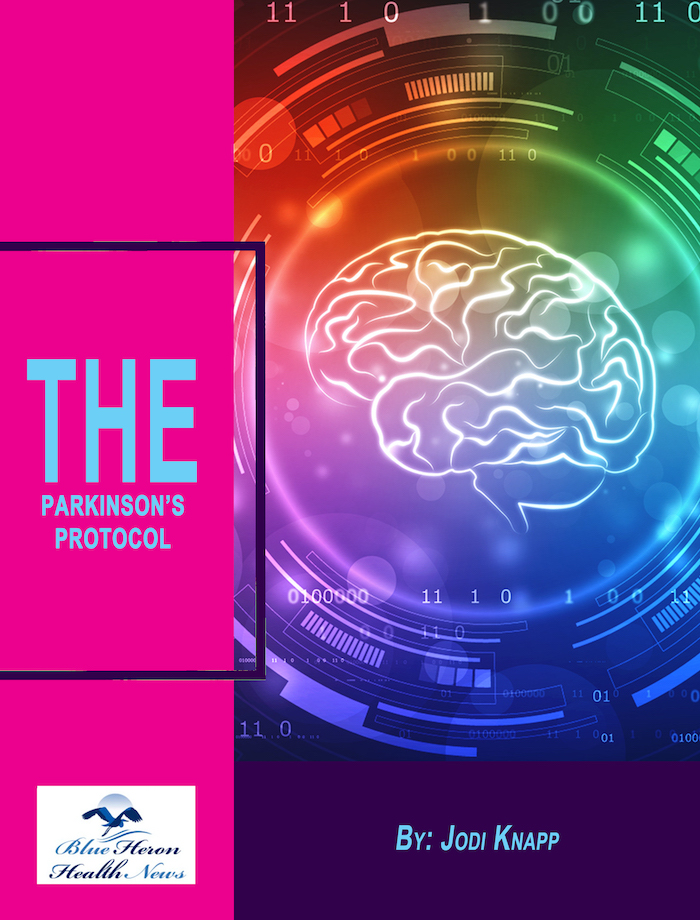
The Parkinson’s Protocol™ By Jodi Knapp Parkinson’s disease cannot be eliminated completely but its symptoms can be reduced, damages can be repaired and its progression can be delayed considerably by using various simple and natural things. In this eBook, a natural program to treat Parkinson’s disease is provided online. it includes 12 easy steps to repair your body and reduce the symptoms of this disease.
Stem Cell Research in Parkinson’s Disease
Stem cell research holds significant promise for the treatment of Parkinson’s disease (PD), a neurodegenerative disorder characterized by the progressive loss of dopaminergic neurons in the brain, particularly in the substantia nigra. The loss of dopamine-producing neurons leads to motor symptoms like tremors, rigidity, bradykinesia, and postural instability, as well as non-motor symptoms such as cognitive decline and mood disturbances. Traditional treatments, such as dopamine replacement therapy (e.g., levodopa), manage symptoms but do not halt the progression of the disease or restore lost neurons.
Stem cell therapy presents a potential for neuroregeneration, offering a method to repair or replace the lost dopaminergic neurons. Stem cells have the unique ability to differentiate into various types of cells, including neurons, making them an exciting area of research for Parkinson’s disease. Here’s an overview of how stem cell research is progressing in the context of Parkinson’s disease treatment:
1. Types of Stem Cells Used in Parkinson’s Disease Research
- Embryonic Stem Cells (ESCs)
- Embryonic stem cells are pluripotent cells, meaning they can differentiate into almost any type of cell in the body. They have the potential to become dopaminergic neurons when directed to do so, making them a powerful tool for treating Parkinson’s disease.
- Challenges: Ethical concerns surrounding the use of embryonic stem cells and the risk of immune rejection are major limitations. However, ongoing research is focusing on ways to minimize these risks, such as through immunosuppressive drugs or tissue matching.
- Induced Pluripotent Stem Cells (iPSCs)
- Induced pluripotent stem cells are adult cells (often skin or blood cells) that have been reprogrammed to become pluripotent, similar to embryonic stem cells. iPSCs are a promising source for personalized therapies because they can be derived from a patient’s own cells, reducing the risk of immune rejection.
- iPSCs have the ability to differentiate into dopaminergic neurons, making them an attractive option for Parkinson’s disease therapy. Researchers have successfully generated dopaminergic neurons from iPSCs in the laboratory, which could potentially be used to replace the lost neurons in Parkinson’s patients.
- Challenges: A key challenge with iPSCs is the need for safe and efficient methods to reprogram adult cells, as well as ensuring that the generated neurons are functional and integrate properly into the brain’s existing network.
- Mesenchymal Stem Cells (MSCs)
- Mesenchymal stem cells, which are multipotent and can be derived from tissues like bone marrow or fat, have shown promise in Parkinson’s disease treatment. While MSCs do not differentiate into dopaminergic neurons, they can secrete neuroprotective factors, such as growth factors and anti-inflammatory cytokines, that may help protect existing neurons and promote healing in the brain.
- These stem cells are less likely to cause immune rejection because they are derived from adult tissue, making them more feasible for clinical use.
- Challenges: The main limitation of MSCs is that they are not capable of replacing the lost dopaminergic neurons directly, but they may serve as supportive therapy by promoting neuroprotection and tissue repair.
- Neural Stem Cells (NSCs)
- Neural stem cells are multipotent cells that can differentiate into various types of neural cells, including dopaminergic neurons. These cells can be obtained from the adult brain or embryonic tissue and have the potential to repair damaged brain tissue.
- Research on neural stem cells for Parkinson’s disease focuses on transplanting these cells into the brain to replace lost dopaminergic neurons or stimulate the brain to generate new neurons.
- Challenges: Ensuring that the transplanted neural stem cells survive, differentiate properly, and integrate functionally into the brain is a major hurdle. Additionally, controlling their differentiation into specific types of neurons is complex and requires careful manipulation.
2. Stem Cell Therapy Strategies for Parkinson’s Disease
- Transplantation of Dopaminergic Neurons:
- One of the primary goals of stem cell research in Parkinson’s disease is to replace the lost dopaminergic neurons by transplanting stem cells that can differentiate into these cells. Preclinical studies and clinical trials have shown that stem cells can survive and differentiate into dopaminergic neurons when transplanted into the brain, which could potentially restore dopamine levels and alleviate motor symptoms.
- Autologous Transplants: The use of a patient’s own stem cells (i.e., autologous transplants) helps minimize immune rejection and eliminates the need for immunosuppressive drugs.
- Neuroprotective Factors and Growth Factors:
- Another approach is to use stem cells to secrete neuroprotective factors that promote the survival and function of remaining dopaminergic neurons. These factors include glial cell line-derived neurotrophic factor (GDNF) and brain-derived neurotrophic factor (BDNF), which can stimulate the growth and survival of dopaminergic neurons.
- Mesenchymal stem cells and neural stem cells have been shown to release such neurotrophic factors, which can protect existing neurons from degeneration and promote recovery.
- Gene Therapy Combined with Stem Cells:
- Stem cells can also be genetically engineered to produce therapeutic proteins or correct genetic mutations associated with Parkinson’s disease. For example, stem cells could be modified to overexpress dopamine-producing enzymes like tyrosine hydroxylase or L-aromatic amino acid decarboxylase, which are critical for dopamine synthesis. This approach could enhance the brain’s ability to produce dopamine and alleviate symptoms of Parkinson’s.
- Combining stem cell therapy with gene therapy offers a potentially powerful strategy to both repair and enhance the functionality of dopaminergic neurons.
- Tissue Engineering and 3D Culture Models:
- Researchers are also exploring 3D culture systems and tissue engineering to create more complex brain-like tissues that can be used for Parkinson’s disease therapy. These tissues may help to mimic the architecture and function of the brain and may improve the integration and survival of transplanted stem cells.
- In addition, bioprinting and scaffold-based approaches are being investigated to create more accurate models for drug screening and as potential tools for regenerative medicine.
3. Clinical Trials and Advancements in Stem Cell Therapy
- Several clinical trials have been launched to evaluate the safety and efficacy of stem cell-based therapies for Parkinson’s disease. For instance, trials using neural stem cell transplants and dopaminergic neuron transplants have shown promising results in small studies, with some patients experiencing improvements in motor function.
- iPSCs are being tested in preclinical models and early-stage clinical trials, with the goal of advancing to larger trials. These trials are investigating the optimal methods for inducing differentiation, transplanting cells into the brain, and monitoring long-term outcomes.
- While clinical outcomes from stem cell-based therapies are still in the early stages, the data are promising. Long-term safety and efficacy will need to be rigorously tested in larger trials before widespread use.
4. Challenges and Risks of Stem Cell Therapy
- Tumorigenesis: One of the major risks with stem cell therapy is the potential for tumor formation (teratomas), particularly with pluripotent stem cells like embryonic stem cells or iPSCs. Researchers are developing methods to ensure that the transplanted cells do not form tumors.
- Immune Rejection: While autologous stem cells (patient-derived cells) reduce the risk of immune rejection, stem cell therapy can still trigger immune responses, especially if there are complications with the stem cell preparation or differentiation process.
- Integration and Functionality: Even if stem cells differentiate into dopaminergic neurons, they must be able to integrate into the existing brain circuitry and function properly. The challenge is ensuring that the transplanted cells establish functional synaptic connections and restore normal dopamine signaling.
- Ethical and Regulatory Issues: Stem cell research, particularly when using embryonic stem cells, is subject to ethical debates and regulatory scrutiny. The safety and ethical considerations associated with stem cell transplantation must be carefully addressed in clinical practice.
5. Future Directions
- Personalized medicine: The ability to generate patient-specific iPSCs holds promise for personalized therapies that are tailored to the individual’s genetic makeup, reducing the risk of immune rejection and improving the precision of treatments.
- Combination therapies: Stem cell therapy may be combined with other approaches, such as gene therapy, neuroprotective agents, and deep brain stimulation (DBS), to enhance the overall effectiveness of treatment.
- Long-term follow-up studies: Long-term clinical trials are needed to assess the safety, efficacy, and durability of stem cell-based therapies for Parkinson’s disease. Ongoing research will help refine these treatments and optimize their clinical implementation.
Conclusion
Stem cell research represents a transformative approach to treating Parkinson’s disease, with the potential to regenerate lost neurons, restore dopamine production, and even slow or halt disease progression. While promising, stem cell therapy for Parkinson’s is still in the early stages, with many challenges to overcome, including ensuring long-term safety, preventing immune rejection, and optimizing the effectiveness of the transplanted cells. However, as research advances, stem cell therapies could become a key component of future Parkinson’s disease treatments, offering hope for those living with this debilitating condition.

The Parkinson’s Protocol™ By Jodi Knapp Parkinson’s disease cannot be eliminated completely but its symptoms can be reduced, damages can be repaired and its progression can be delayed considerably by using various simple and natural things. In this eBook, a natural program to treat Parkinson’s disease is provided online. it includes 12 easy steps to repair your body and reduce the symptoms of this disease.